The whereabouts of one of the largest paintings by artist Alfredo Ramos Martinez has been widely unknown to art scholars for decades. Safely stored at the Missouri Historical Society’s Library and Research Center, the monumental 9-by-12-foot masterpiece is on display to the public for the first time in a half-century in a new exhibit.
The painting is the breathtaking focal point of “Flores Mexicanas: A Lindbergh Love Story,” a 2,000-square-foot special exhibit at the Missouri History Museum located in St. Louis’s Forest Park. Prior to filling its starring role in the exhibit, “Flores Mexicanas” was in need of conservation so that it could be displayed in its near original splendor and to ensure it could safely hang in the gallery.
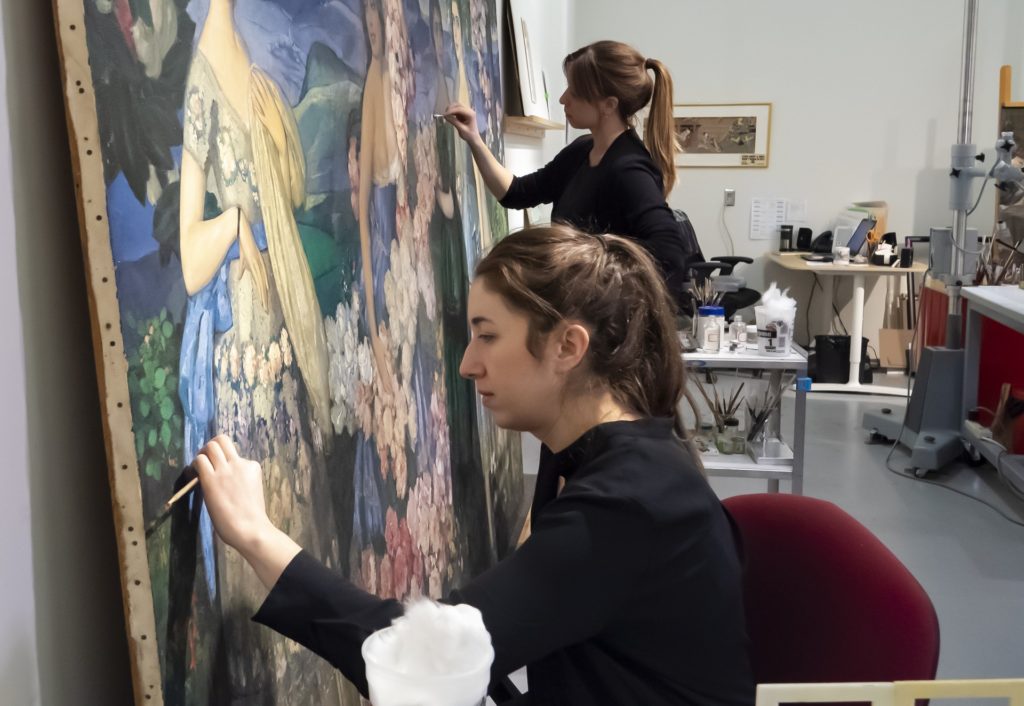
More from the museum:
It’s a name you know and a story you don’t. The Missouri Historical Society houses and cares for one of the largest collections of Charles Lindbergh artifacts in the world. Drawing from this collection, the Museum developed a new 2,000-square-foot special exhibit “Flores Mexicanas: A Lindbergh Love Story.”
In addition to “Flores Mexicanas,” hundreds of photographs, historic footage, and 20 other Lindbergh artifacts offer a fresh perspective to a familiar name.
“Flores Mexicanas: A Lindbergh Love Story” soars beyond the famed aviator’s historic flight and reveals the connection between a poet, a pilot, a president, and a painter that altered the course of aviation history and left a lasting legacy on U.S.–Mexico relations.
ABOUT FLORES MEXICANAS
In 1929 Mexican president Emilio Portes Gil gave the Lindberghs the Martinez masterpiece as a wedding gift. Mexico was significant to the Lindberghs as the place where their love story began. For the Mexican government, the gift was a chance to impress the daughter and son-in-law of the United States’ respected ambassador to Mexico, Dwight Morrow — Anne’s father.
Martinez started working on “Flores Mexicanas” long before anyone had heard of Charles or Anne Lindbergh. He spent about 15 years working on the piece before it was completed and purchased by President Emilio Portes Gil. “Flores Mexicanas” was Martinez’s last work completed in Mexico before he moved to Los Angeles in 1929 and one of his final paintings with strong European influence before he took up the modernist style for which he has become known and loved.
Charles Lindbergh later entrusted “Flores Mexicanas” and many of his other gifts and awards to the care of the Missouri Historical Society. Safely stored at the Missouri Historical Society’s Library and Research Center for decades, many art scholars were unaware of the location of “Flores Mexicanas.”
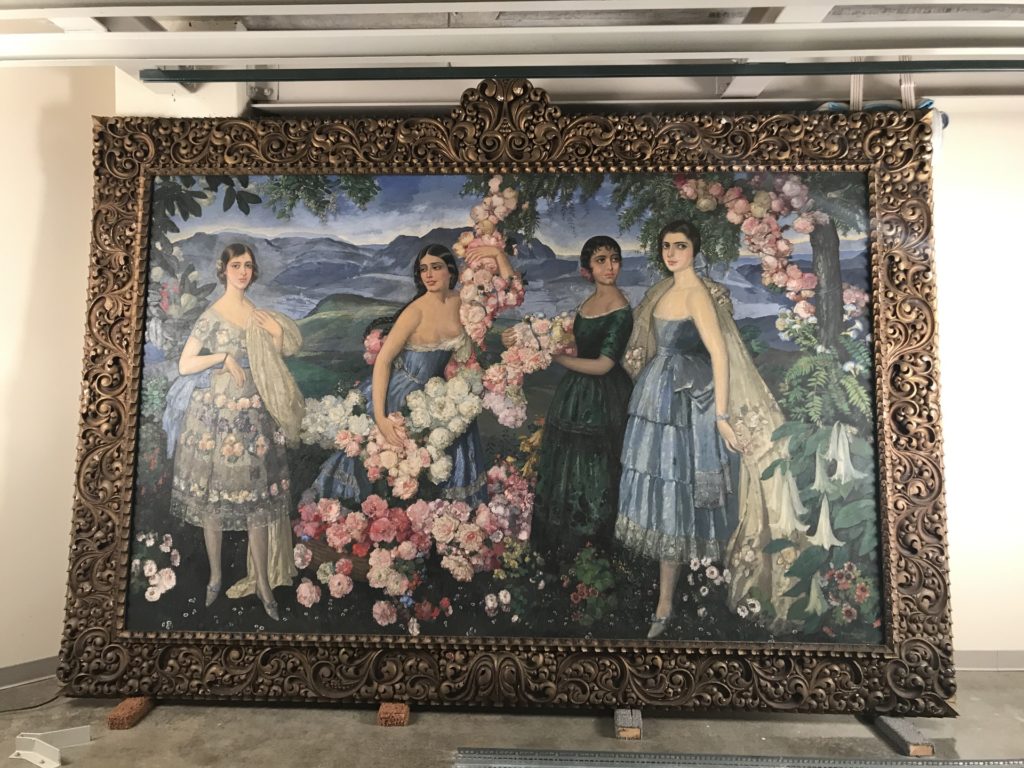
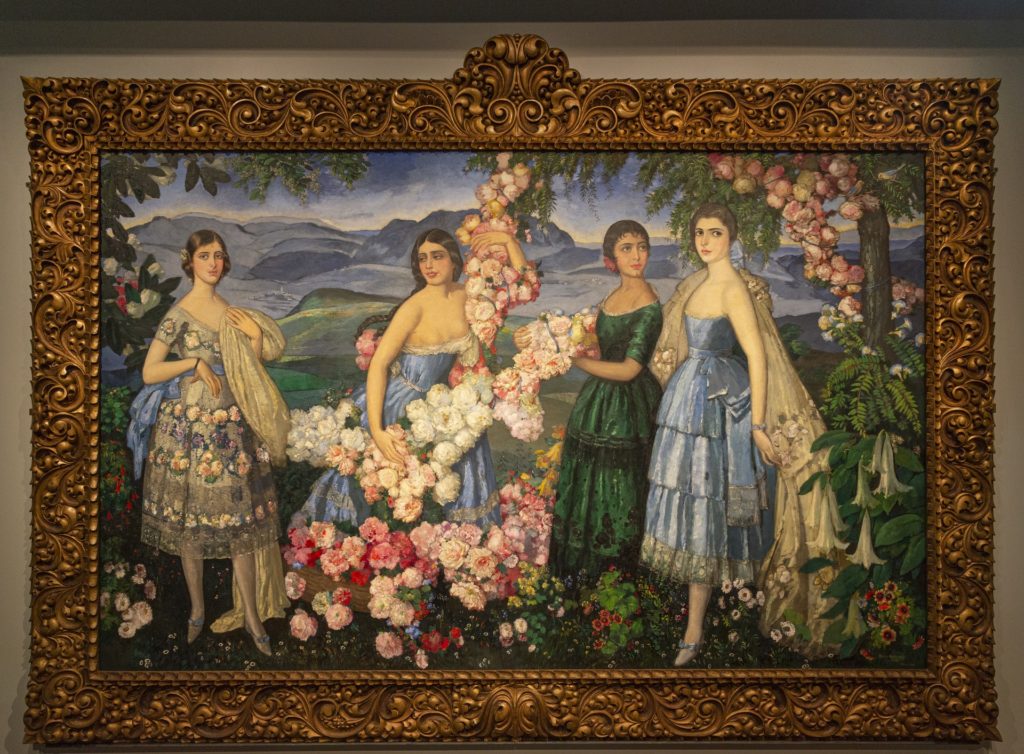
Conserving the Painting
Prior to filling its starring role in “Flores Mexicanas: A Lindbergh Love Story” the painting and its ornate hand-carved wooden frame were in need of conservation so it could be displayed in its near original splendor and to ensure it could hang safely in the gallery. The Missouri Historical Society worked with specialists at the Midwest Art Conservation Center in Minneapolis on the conservation process, which was generously funded by the Bank of America Art Conservation Project and the Ed & H. Pillsbury Foundation.
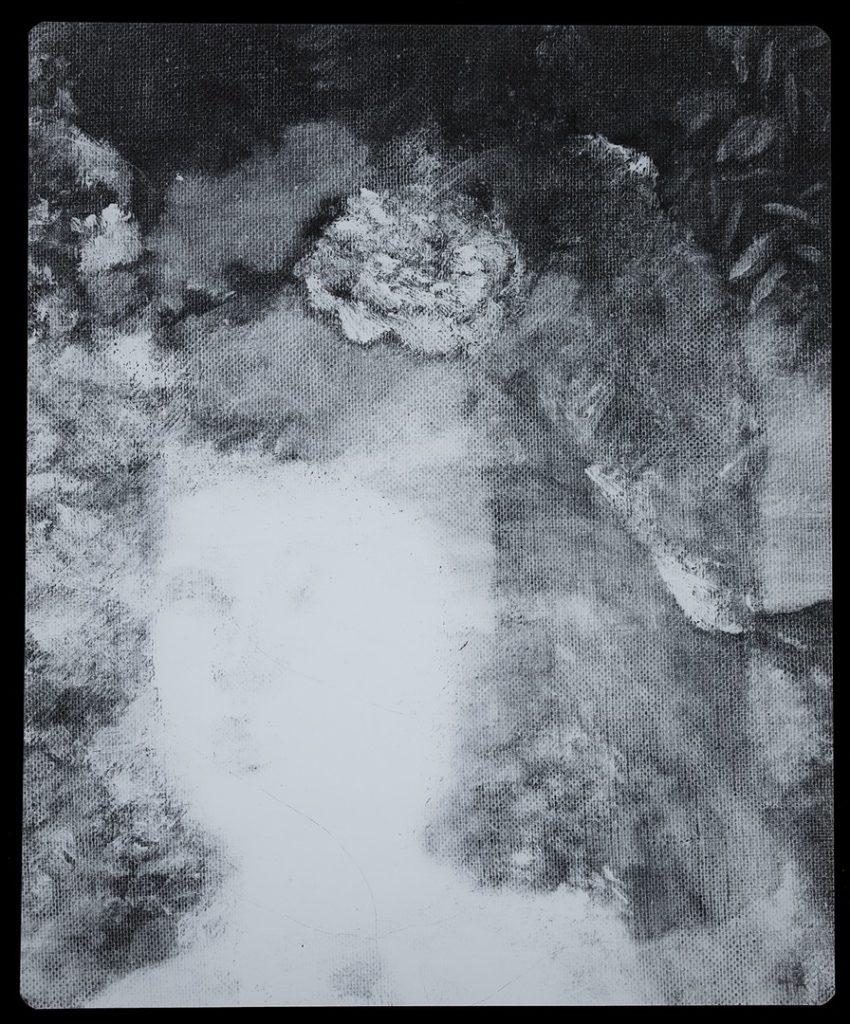
The first step in the conservation process was to x-ray Martinez’s masterpiece at the Missouri Historical Society Library and Research Center. This normal step in the conservation process revealed a surprising discovery. As the equipment was being calibrated, an image was taken of the upper-right portion of the canvas, revealing a woman who had been painted over. This provides evidence that a compositional change had taken place. A search through the Missouri Historical Society’s Photographs and Prints Collection uncovered a picture taken of “Flores Mexicanas” in the mid-to-late 1930s. Comparing the painting to the old photograph confirmed that the woman had already been painted over by the time it came to the Missouri Historical Society (MHS). No one knows for sure if Ramos Martinez decided to paint over this figure or if he moved it to a different place on the canvas.
“Flores Mexicanas” is being cleaned with cotton swabs and a special cleaning solution to remove layers of discolored varnish and grime that has accumulated over the last 90 years. The painting will be fitted to a new stretcher that will provide better support to the canvas. A puncture in the lower right-hand corner is being mended. Any losses that have occurred over time in the gesso and paint layers have been filled and toned in to visually blend with the surrounding surfaces. Areas where the paint is flaking off the surface will be consolidated to prevent further losses.
The frame has also been carefully cleaned, first with a dry sponge, followed by a “wet” cleaning with a conservation-safe solution. Losses in the frame’s gesso and paint layers have been filled, smoothed, and shaped to match the original surface. Conservators then inpainted the fills so they matched the original color of the surface.
“I’m so very grateful to the Missouri History Museum for taking on this project, and for bringing forward this brief, bright period of my parents’ life together so that other people can understand it, and them, a little better. It means a great deal to me.” — Reeve Lindbergh
“Flores Mexicanas: A Lindbergh Love Story” is on view at the Missouri History Museum through September 2, 2019.
Sign up to receive Fine Art Today, the free weekly e-newsletter from
Fine Art Connoisseur magazine.

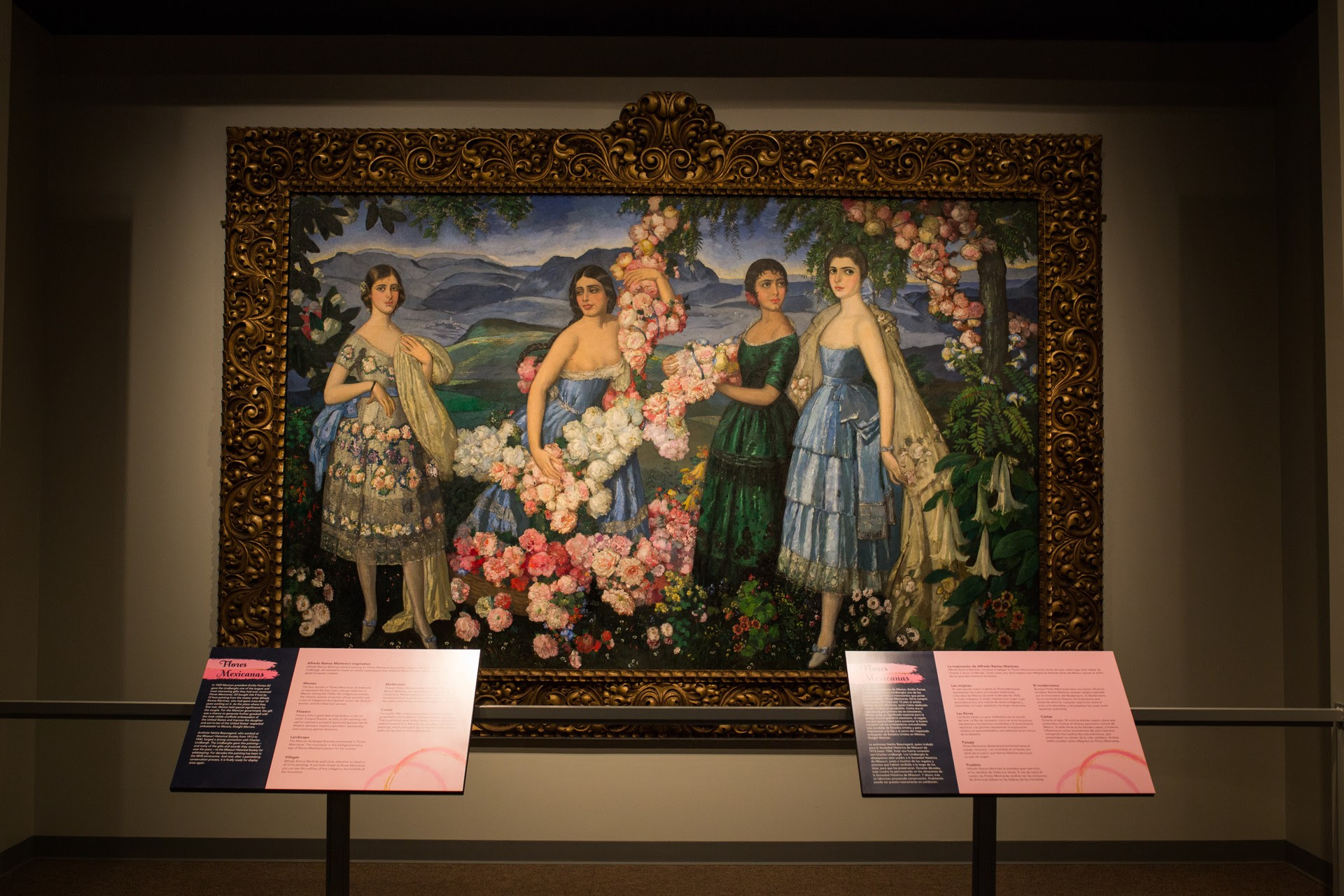


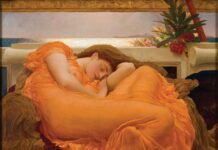




[…] “Flores Mexicanas” is the name of a monumental painting depicting four young women in an idyllic landscape. Although it was kept in storage for more than 80 years at the Missouri Historical Society, the piece was recently unearthed and conserved. But how did it get there? In 1929, the then president of Mexico gave the 9-by-12-foot work of art to aviators Charles and Anne Lindbergh as a wedding present. Anne was the daughter of the American ambassador to Mexico, Dwight Morrow. […]